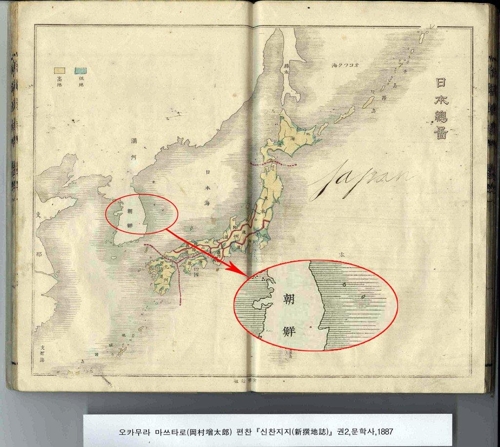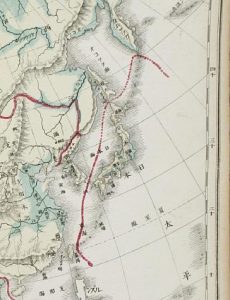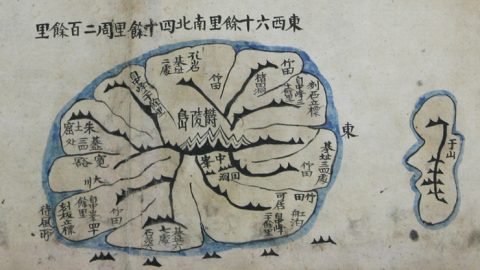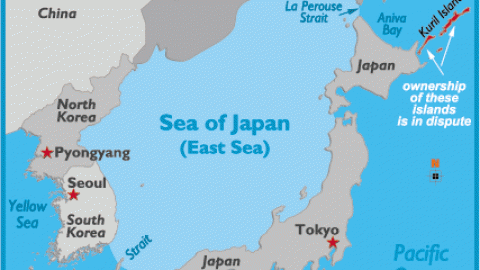In the book’s map on Asia, while Japanese territory is outlined in red, the two islands — Ulleungdo and Dokdo in the East Sea — clearly remain outside its territory.
Marking its border as such is also found in another Japanese textbooks written by Manziro Yamagami in 1902 and 1903.
“If Japan thought Dokdo as its own, it must have marked it on the map and included it inside the borderline,” Han said, adding that “It is clear that Japan didn’t recognize Dokdo as its own at that time.”
His claim is backed by another part of the book where all the Japanese islands are written down, but information on Dokdo is nowhere to be found, an important historical record that was already introduced to the Korean academic circle back in 2012.
“The geographical textbook by Okamura was authorized by the state, which means it was not an opinion held by an individual but by the Japanese government,” Han said.
“It is vital historical data to dispute Japanese claims that Dokdo is its own territory and that it has been illegally occupied (by Korea).”
Another geographical book written by Okamura in 1892 is yet another example that contradicts Japan’s wrongful territorial argument on the Korean island, he added.







![[PyeongChang 2018] Korea not to use Dokdo-showing flag during PyeongChang Olympics](http://www.eastseakorea.com/wp-content/uploads/2018/02/20180206000756_0-480x270.jpg)

